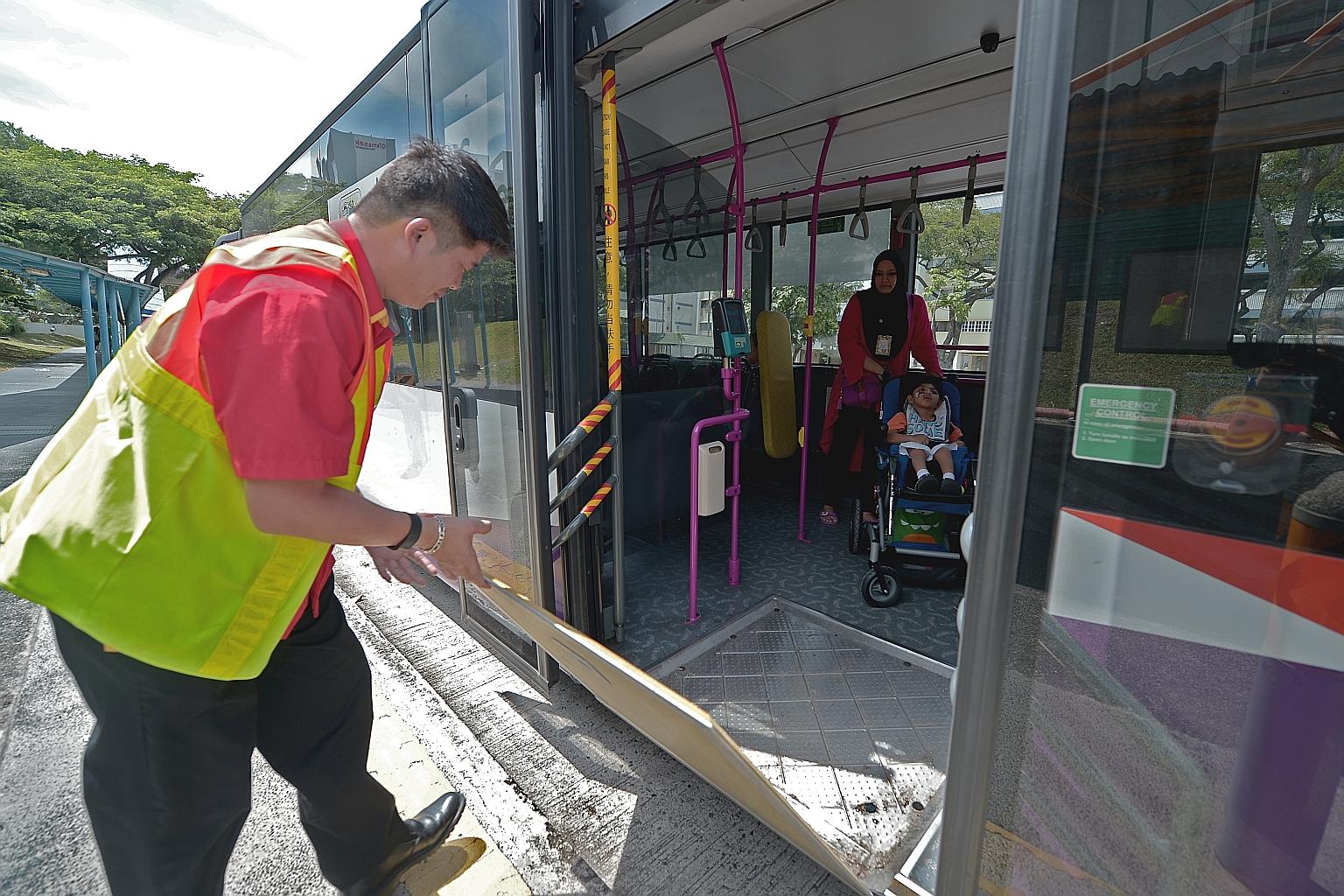Auto ramps for buses under study
Buses now have manual wheelchair ramps; LTA studying feasibility of automated ones
Sign up now: Get ST's newsletters delivered to your inbox

A bus captain opening the ramp of his bus for a passenger. As of October, about 91 per cent of the 5,330 public buses have manual ramps. Bus captains have to get out of their cabins to open the ramp, which is on the floorboard at the rear door.
ST PHOTO: MARCUS TAN
Adrian Lim
Follow topic:
Automated wheelchair ramps are being considered for Singapore's public buses, to make boarding and alighting more convenient for disabled and elderly commuters.
The Land Transport Authority (LTA) told The Straits Times earlier this week that it was studying the feasibility of automated ramps, while weighing "operational, practicality and cost considerations".
Currently, wheelchair-accessible buses in Singapore have ramps which have to be manually deployed by bus captains. This requires bus captains to get out of their cabins to open the ramp, which is on the floorboard at the rear door.
These ramps form a bridge between the bus floor and the kerb at the bus stop.
The LTA is believed to be in discussions with Singapore Technologies Kinetics, the sole distributor for the MAN brand of buses here, to explore producing a bus with an automatic ramp.
Since 2006, public buses have been fitted with manual ramps to make them wheelchair-friendly.
As of October, about 91 per cent of the 5,330 public buses have them, the LTA said. By 2020, the authority aims to make the bulk of public buses wheelchair-accessible.
While automated ramps are already used on buses in cities such as London, they are non-existent here.
Cost may be an issue - industry players say automatic ramps for buses cost about two to three times more than manual versions.
SBS Transit said on its website that "based on the experience of overseas operators, the frequency of (a) manual ramp failing is much lower as compared to the automatic ramp".
With the bus sector's complete transition to a contracting model in September, the LTA now owns and buys all public buses, enabling it to review and upgrade their design.
For example, the new MAN A95 double-deckers - the first 10 of which were launched in September - feature USB ports for commuters to charge their mobile devices. Another 137 of these buses are being rolled out progressively.
Bus operator Go-Ahead said it "looks forward" to automated ramps if tests are successful as the system will not hold up other commuters.
Mr Ng Aik Juay, 62, a wheelchair user, said that automation is good, but the ramps will need to be level with the kerb at the bus stop.
"As the bus floor is sometimes higher than the kerb, the ramp now is slanted, making it hard to wheel myself up," said Mr Ng, who is currently unemployed.
Mr Chong Sui Yang, 78, a retiree who uses a mobility scooter, said automated ramps will be more convenient for bus captains. But he asked if bus captains would still assist commuters, since they would be able to activate the ramps from the driver's cabin.
"The bus captains now help to keep an eye on us, especially when we reverse the scooter out, which can sometimes be tricky," he said in Mandarin.

